Popular games for platform Commodore Plus/4

Planetfall is a science fiction interactive fiction computer game written by Steve Meretzky, and the eighth title published by Infocom in 1983. Like most Infocom games, thanks to the portable Z-machine, it was released for several platforms simultaneously. The original release included versions for the PC (both as a booter and for DOS) and Apple II. The Atari ST and Commodore 64 versions were released in 1985. A version for CP/M was also released. Although Planetfall was Meretzky's first title, it proved one of his most popular works and a best-seller for Infocom; it was one of five top-selling titles to be re-released in Solid Gold versions including in-game hints. Planetfall utilizes the Z-machine originally developed for the Zork franchise and was added as a bonus to the "Zork Anthology". The word planetfall is a portmanteau of planet and landfall, and occasionally used in science fiction to that effect. The book Planetfall written by Arthur Byron Cover, uses the game image on the cover, and is marketed "In the bestselling tradition of THE HITCHHIKER'S GUIDE TO THE GALAXY.[2] A sequel, Stationfall, was released in 1987. Planetfall teleports you 12,000 years into an outrageous future. You joined the Stellar Patrol to explore the galaxy, but all you've seen is the end of a mop - until your ship explodes and you're jettisoned onto a mysterious, deserted planet. Luckily, you have Floyd, a lovable multi-purpose robot with the personality of a mischievous 8-year-old. He's the ideal companion with whom to brave your new world, as you dare its dangers and uncover its secrets.
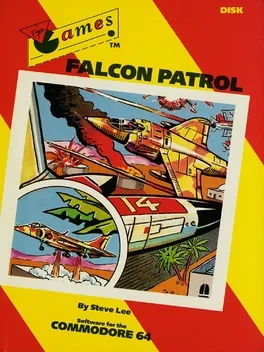
Falcon Patrol is a two-way side-scrolling shooter. Players fly a jet across a looping area and must shoot down attacking aircraft. A small radar at the bottom of the screen shows the enemies' position. Fuel and rockets are limited, but there are several landing platforms where the jet can be refueled and resupplied. Before the jet is able to land however, it needs to be brought to a full halt right above the platform, leaving it vulnerable to attacks. Landing platforms can also be destroyed if they are bombed or enemy planes crash into them. As the game progresses, enemies attack in increasingly large and difficult waves.
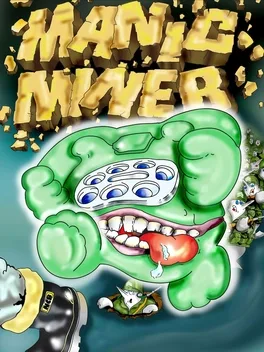
Manic Miner is a platform video game originally written for the ZX Spectrum by Matthew Smith and released by Bug-Byte in 1983 (later re-released by Software Projects). It is the first game in the Miner Willy series and among the early titles in the platform game genre. The game itself was inspired by the Atari 800 game Miner 2049er. It has since been ported to numerous home computers and video game consoles.
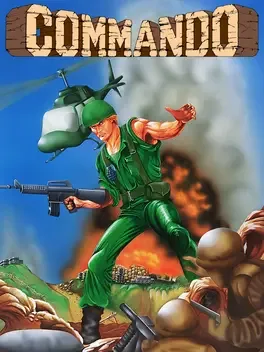
Several levels await your super-tough Commando in this arcade conversion. Armed with only a standard rifle and a few grenades you must take on hordes of enemies. Some are wandering around in the open, while others have picked out hiding places, which you must approach from certain angles. Trees, rivers and bridges create a varied combat-like terrain and must be incorporated into your thinking. Extra grenades can be collected, and will definitely be required, as they allow you to kill from distance and thus avoid some enemy shots.

Jet Set Willy is a flip-screen platform game in which the player moves the protagonist, Willy, from room to room in his mansion collecting objects. Unlike the screen-by-screen style of its prequel, the player can explore the mansion at will.
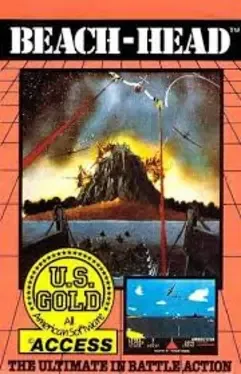
The first game in the Beach Head series, the game depicts the player's violent war effort to end a dictator's reign
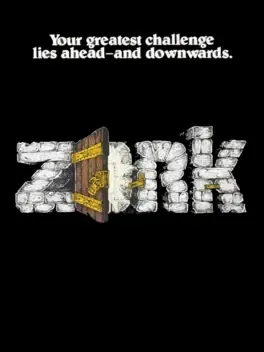
Zork is one of the earliest interactive fiction computer games, with roots drawn from the original genre game, Colossal Cave Adventure. The first version of Zork was written in 1977–1979 using the MDL programming language on a DEC PDP-10 computer.
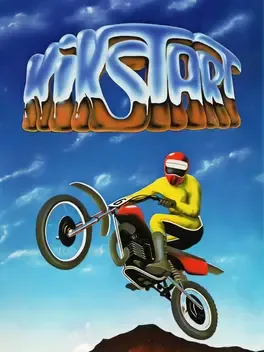
Kikstart is a motorcycle trials racing game it allowed 2-player simultaneous (via a split-screen facility) or 1-player, vs-computer play. The basic premise of the game is to control a bike using acceleration, braking, "hopping" and "wheelies" to navigate across a course of various obstacles, from ramps and gates to telephone boxes and tires.
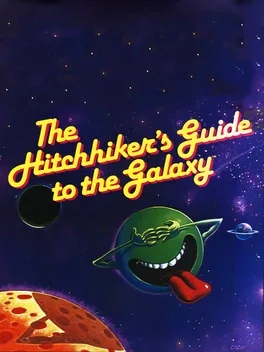
The Hitchhiker’s Guide to the Galaxy is a classic Interactive Fiction game. Though divergent from the source material, the main characters, locations, and concepts are here. Unlike the book, death can come quickly if Arthur fails to observe his surroundings, collect inventory, talk to people, and consult the Guide. Don't panic!
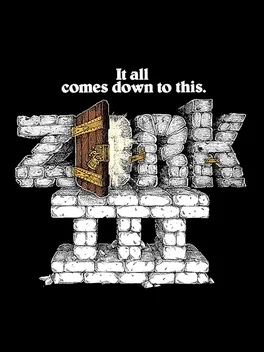
In the third game of the adventure game series Zork, you are once again a nameless adventurer, only this time you won't travel through a beautiful magical land, but are immediately cast into a deep dungeon. Like in a dream, you hear a mysterious voice telling you that you have passed all the tests but one. When conscience returns to you, you find yourself on the endless spiral of stairs, with only your trusty lantern near you... will you be able to survive the horrors of the Dungeon?
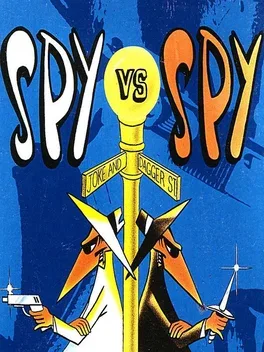
The black spy and the white spy are out to outsmart each other before the time bell rings. Find the needed objects (money, passport, secret plans and airport door key) by searching rooms in the embassy, which include desks, file cabinets and other furniture. Foil your opponent by setting creative booby traps in the various rooms (a bomb in a dresser drawer, for instance). Traps can be disarmed with objects found in rooms (a water bucket from a firebox on the wall will disarm the bomb in the prior example). When all the items are together in the secret briefcase, head for the airport door.
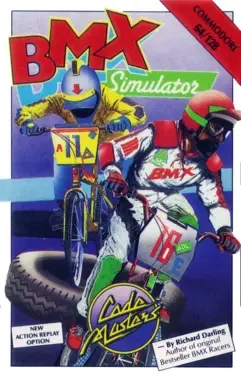
AMAZING REALISM - the burms, bumps and ramps really work. Seven courses, each one harder. Two player option and ACTION REPLAY with SLO-MO - all make this the best BMX game yet!
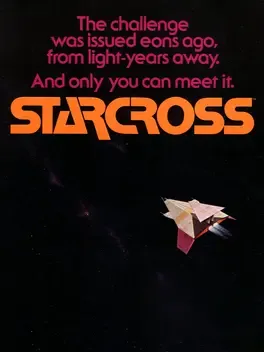
The year is 2186. Humanity has established colonies on the moon, Mars, and several of the larger asteroids. Earth's sky is dotted with space habitats, and the spaceways are always busy. As usual, there is the urgent need for energy to power this advanced civilization; one of the primary sources of that energy is quantum black holes. In Starcross, you are a miner of black holes, scouring the asteroid belt in your one-man survey ship. Finding and harnessing a single black hole can make a person's fortune. It's a lonely business, fraught with the known and unknown hazards of space. You've equipped your ship, the M.C.S. STARCROSS, with the best gear you could afford. You've put everything into this venture, and though you've tried before, you somehow sense that this time will be different.

Airwolf, an advanced supersonic helicopter with stealth capabilities and a formidable arsenal, was designed by Dr. Charles Henry Moffet (David Hemmings) - a genius with a psychopathic taste for torturing and killing women - and built by the Firm, a division of the CIA (a play on the term "the Company", a nickname for the CIA). As the series begins, Dr. Moffet and his crew steal Airwolf during a live-fire weapons test. During the theft, Moffet opens fire on the Firm's bunker, killing a United States Senator and seriously injuring Firm deputy director Michael Coldsmith-Briggs III (codename "Archangel"). Moffet takes the gunship to Libya, where he begins performing acts of aggression - such as sinking an American destroyer - as a service for military strongman Muammar Gaddafi, who allows Moffet to keep Airwolf on Libyan soil.
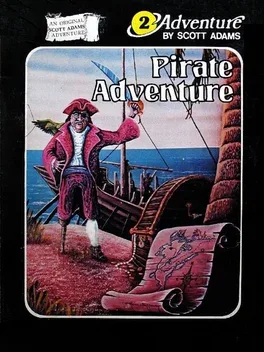
Your goal in this text adventure is to find a pirate treasure using two word commands.
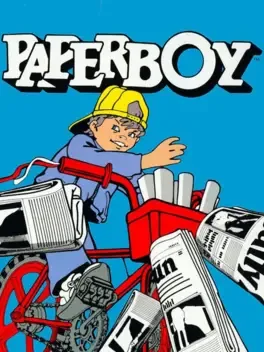
Paperboy is a 1985 arcade game by Atari Games originally developed in 1984 . The players take the role of a paperboy who delivers newspapers along a suburban street on his bicycle. The game was ported to numerous video game consoles and personal computers. Paperboy was innovative for its theme and novel controls. The player controls a paperboy on a bicycle delivering newspapers along a suburban street which is displayed in a cabinet perspective (or oblique projection) view. The player attempts to deliver a week of daily newspapers to subscribing customers, attempts to vandalize non-subscribers' homes and must avoid hazards along the street. Subscribers are lost by missing a delivery or damaging a subscriber's house.
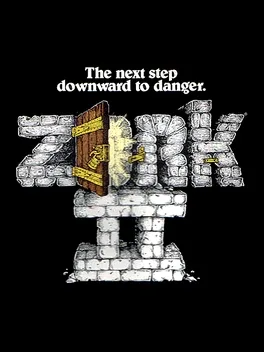
The adventure begins in the Barrow from "Zork I" armed only with the trusty brass lantern and sword of elvish antiquity. The purpose of the game is not initially clear. Like its predecessor, Zork II is essentially a treasure hunt. Unlike the previous game, the ten treasures are tied together by a crude plot. Finding the treasures does not end the game, nor are all the treasures needed to finish the game. Instead, the adventurer must figure out a way to use the treasures in order to reach the game's finale.

Questprobe featuring The Hulk is a graphic adventure video game. It is the first entry in Questprobe, an intended series of graphic adventure games that only released three instalments before the developer's bankruptcy. The game's narrative follows the Marvel superhero Hulk and his human alter-ego Bruce Banner (in their first video game appearance), who must explore the mysterious lair of the Chief Examiner.
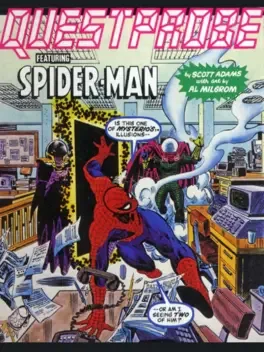
The second in Scott Adams' series of Questprobe text adventures, starring Spider-Man.

There were three warnings. Keep them out of light, especially sunlight. Don't ever get them wet. Keep them away from water. But the most important thing, the thing you must never forget . . . no matter how much they cry, no matter how much they beg never, never feed them after midnight.”
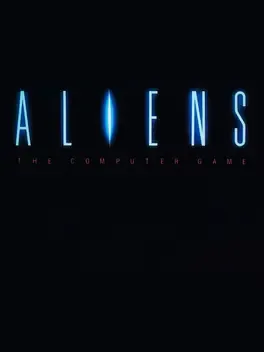
Aliens: The Computer Game is a 1986 video game developed by Software Studios and published by Electric Dreams Software initially for Amstrad CPC, Commodore 64 and ZX Spectrum. It is based on the film of the same title. Ports for the Commodore 16 and MSX were developed by Mr. Micro and published in 1987. Aliens: The Computer Game is played from a first-person perspective and is set inside an atmosphere processing plant, a maze complex consisting of 255 rooms. The player encounters Alien enemies throughout the game. Upon killing an Alien, the body leaves a deadly pool of acid blood that must be avoided. The player also faces the threat of bio-mechanical growth, which, if left uncontained, results in new Alien eggs and facehugger enemies. The player's ultimate goal is to reach the room that houses the Queen Alien and her nests, both of which must be destroyed. The player can directly control a team of Marine soldiers, or can issue orders to the team from the Mobile Tactical Operations Bay (MTOB). When playing from the MTOB, the player has a view of the team's surroundings via video cameras attached to each soldier's helmet.
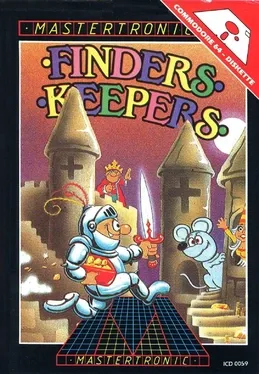
Magic Knight has been sent to the Castle of Spriteland by the King of Ibsisima in order to find a special present for Princess Germintrude. If Magic Knight is successful in his quest, he may have proved himself worthy of joining the famous "Polygon Table".

From the producers of Pets Rescue and Alpharay comes their biggest 8-bit production yet! Lykia is an epic quest for the C64 and expanded C16 + Plus/4 that spans 4 disk-sides! The beautifully presented adventure features lots of characters to interact with as you help Nora on her magical quest to find the lost island.
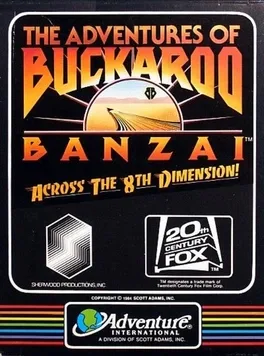
Based on the movie of the same title, in this graphical text adventure you are Buckaroo Banzai, a jack of all trades. You try to thwart the plans of your arch enemy and criminal mastermind Hanoi Xan and those of the Black Lectroids from Planet 10 who want to destroy Earth via a planet-consuming bomb.